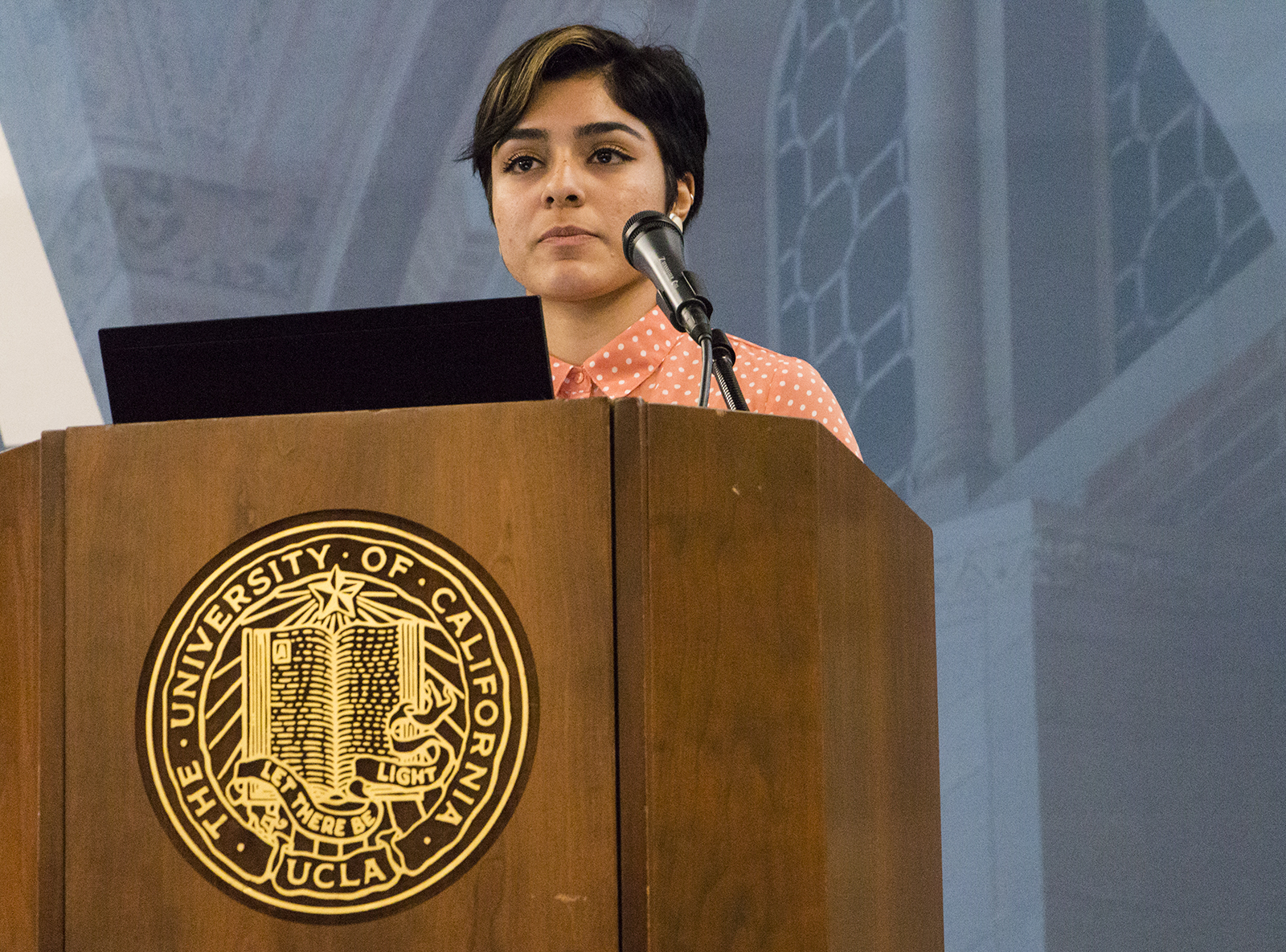UCLA student teaches high schoolers hip-hop to connect with culture

Sandra Parra, a fourth-year dance student, researches how hip-hop education helps Latino students at her local high school identify with their ethnicity. (Laura Uzes/Daily Bruin)
By Xinchen Li
May 24, 2016 12:26 a.m.
Sandra Parra said UCLA’s hip-hop community gave her a sense of belonging and power when she moved to Los Angeles as a freshman.
Because hip-hop dance helped her identify with her culture during her first few months at UCLA, Parra, a fourth-year dance student, decided to help other students do the same in high school.
Parra, one of five students selected to be in UCLA’s Astin Scholars Program for research in civic engagement, is working with her high school dance program to research how hip-hop dance education helps Latino high school students identify with their ethnicity.
Parra presented her research project with four other scholars Monday evening at Collins Alumni Conference Room at UCLA.
“Hip-hop represents a free expression of oneself,” Parra said. “I want to guide these young Latino students to learn what culture means to them, to their family and to their community (through hip-hop).”
Parra created a curriculum for high school students in Godinez Fundamental High School in Santa Ana, California, where she graduated from.
The curriculum consists of a weekly hip-hop dance class and a weekly discussion session about the historical and cultural context of hip-hop dancing, she said. The discussions explore topics such as how art can highlight issues of race, gender and ethnicity in society. Parra teaches the class, which consists of 35 Latino students.
As part of the class, Parra asked students to write journals and fill out questionnaires about their experience. She also had students take a psychological assessment before and after the classes to determine how confident they felt about their culture and position in society.
Parra then analyzed the journals and questionnaires and compared the psychological assessments of the students before and after the classes, she said.
She said she discovered students became more confident and established a deeper understanding of their own cultural background after taking the class.
Douglas Barrera, associate director for engaged research at the UCLA Center for Community Learning and Parra’s mentor in this program, said he thinks encouraging students to explore the communal aspect of hip-hop, rather than just learn to dance, is difficult.
“This project is so personal for Sandra,” Barrera said. “She has the incentive to dig deeper (and makes sure she) intrigues her students to reflect on their cultural identities.”
Parra said although she expected students to enjoy the dance classes more than discussions, students were upset when she told them she would be unable to have a discussion session last week.
“I’m impressed by how much these students also enjoy the ‘deep talk,'” Parra said. “This suggests hip-hop does lead them to reflect on their own background and how they can make a difference.”
Dan Froot, Parra’s dance mentor and a world arts and cultures professor, said Parra’s research project shows how young people can express themselves through hip-hop and simultaneously strive for social justice.
Barrera said he thinks Parra sets an example for students because she pursues hip-hop dancing as more than just a hobby or major and recognizes the social impact of dance.
“Sandra’s determination should inspire future Astin scholars and students on campus to follow her example and to find their passion,” Barrera said.

